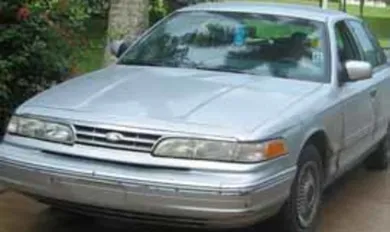
If you’ve not made Central American border crossings before, beware the horde
Hordes greet foreign cars at Central American border crossings, ready to pluck the unwary tourist clean. I picked the toughest ‘helper’ I could find.
Drive to Panama includes a wreck, a confrontation with a large truck and tips to avoid the same happening to you.
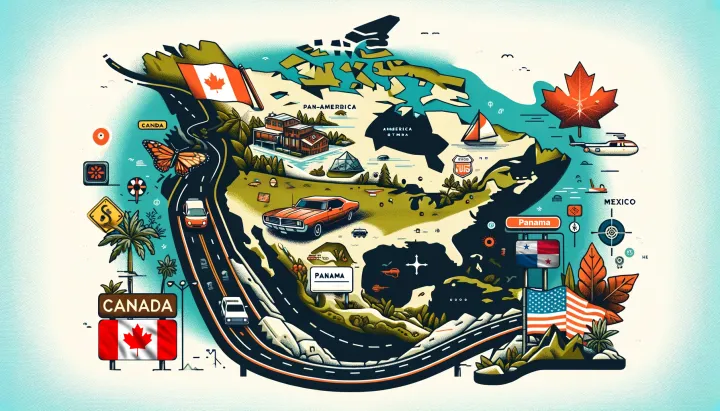
Anyone who would drive to Panama alone from Eastern Canada in 16 days, is absolutely nuts. I guess that makes me a strong candidate.
At almost 70 years of age, I thought driving to Panama would be a last great adventure. I forgot that there could be bad adventures as well as good ones.
I set out to drive to Panama from Halifax, Nova Scotia, on October 4, 2003, arriving on October 29. I did not travel on 10 of those days. On the way, I wrecked my car in Kentucky and had to buy a new one. I had driven 1,126km from Philadelphia to Cincinnati the night before, caught a few hours’ sleep outside Cincinnati, and then covered about another 400km by 4pm that same day, October 9. Fighting sleep, I was looking for a place to pull over. I stopped at the side of the road, but too many considerate Kentuckians stopped to enquire if I was okay. No rest to be had there. I was hunting for a place off the road, but fell asleep before I found it. My spotless, low-mileage Crown Victoria was a write-off.
By the time I left the Hodgenville, Kentucky, dealership two days later to resume my drive to Panama, my insurers in Halifax had gone home for the weekend. I was assured by the dealer that the insurance on my wrecked car would cover my used Crown Victoria for 48 hours. That was enough time for me to reach the Mexican border where, all the books emphasized, I had to buy Mexican insurance. More about that in a minute.
Thirteen hours after setting out from the dealership to continue my drive to Panama, the engine blew. It was 7 a.m. in Temple, Texas, 948 miles later. I was later told that the intake (whatever that is) was cracked when I bought the car. Many hours later and after catching up on some sleep, I was on my way with a replacement engine and $3,000 less in my pocket. I was virtually broke.
If you are American, listen to the books about taking a car into Mexico. If you are Canadian, don’t! The books, all published in the U.S., fail to point out that the need for Mexican insurance applies only to Americans. I have no idea why. Canadian insurance is okay in Mexico.
It was nighttime when I passed through the U.S.-Mexican border at Laredo, Texas, on October 11 with no word of Spanish other than graçias. The third country on my drive to Panama, and the first in which English was not the native tongue.
Picture this: a long building. The full length of one wall, protective windows through which to speak to the official behind. Possibly 10 such stations. Not a single person who admitted to speaking a work of English. Start at one end, after filling out a form (thankfully, there is an English version). Pay money, get the form stamped, next window. A different thing takes place at each window. Somewhere in here must be where they issue the insurance, right? I get to the last window. “Is that it?” I ask, mostly with signs and shrugs. I am assured it is…I think. I leave. I am in Mexico, ready to continue my drive to Panama.
The next night I am on Mexican Highway 54, about 125 miles short of Guadalajara, where I planned to take a break. It is 9 p.m., dark, the road glistening from a recent shower. Barreling down the center of the road is a large truck. I squeeze over as far as I can, but the truck hits the driver’s side. Amazingly, it does so with only its giant-sized tires, buckling the door and leaving black rubber down the entire side of the car from the door handles down. My drive to Panama almost ends right there.
The truck stops several hundred feet past me, then it takes off. Finding out that the car still goes, I wheel it around and give chase for several miles. I am furious. Eventually, I catch him and force him to stop. On a desolate stretch of road, we stop other vehicles and ask them to get word to the police. We wait five hours; no police.
Eventually, I write down the license plate number and let the driver go so I can continue my ill-fated drive to Panama. I have what the police will want…I think. What I did not know at the time is that each state has its own series of license plates, just like the U.S. I did not take note of what state the plate was from, so my information was useless.
Six days later, I am still in Guadalajara. I finally discover that I have no insurance.
My experience of driving to Panama is as unique as it is unfortunate. Most people, I am sure, have no problems at all, other than with some road conditions and the border crossings. Would I drive to Panama again? Absolutely not, but that doesn’t mean that you should not. Just be aware of the many things that can go wrong. Take it easy (I was trying to meet what turned out to be an unrealistic deadline), allow plenty of time, get lots of rest, avoid driving at night, and avoid driving solo.

Hordes greet foreign cars at Central American border crossings, ready to pluck the unwary tourist clean. I picked the toughest ‘helper’ I could find.
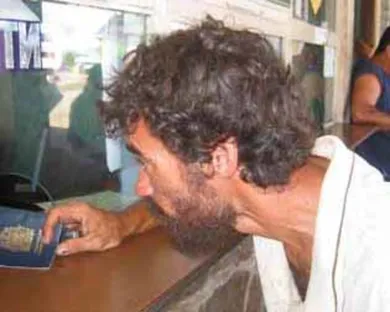
Costa Rica termed him an unwelcome visitor 19 times, but police used him as a translator.
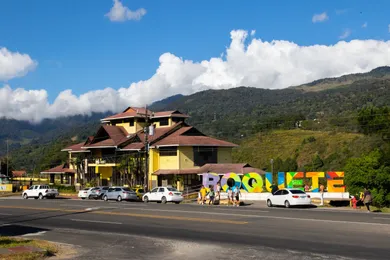
Boquete, in the green mountains of Chiriqui is quiet, unspoiled, uncrowded, with tumbling rivers and waterfalls. Plus an it has ideal year-round climate.
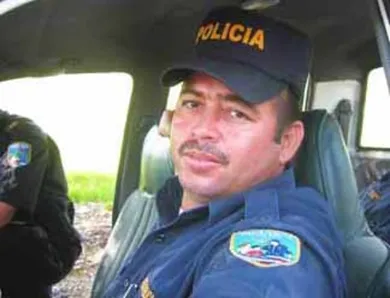
Underpaid police in Central America hold drivers up for money, but you can turn the tables and make them beg you to go on your way. It’s easy.